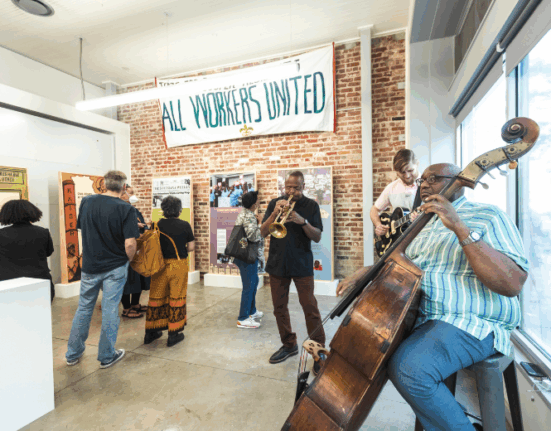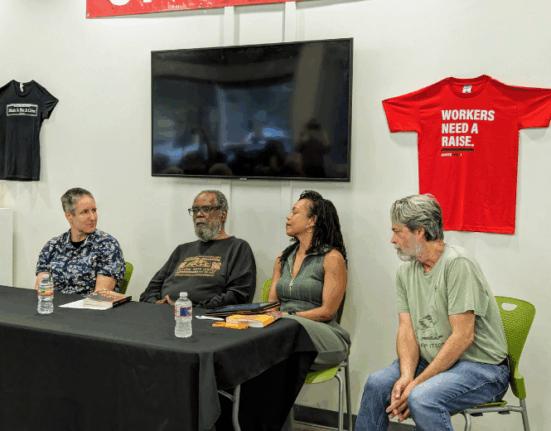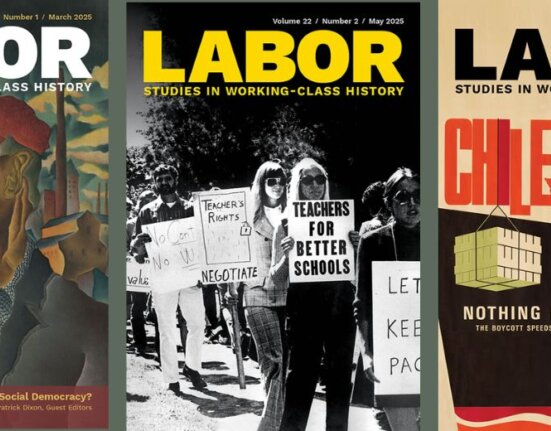Given that many working people are also poor, Labor Day is good time to talk about poverty in the United States. But in this election year, with so much with emphasis on jobs, we should look especially at the relationship between poverty and the changing landscape of work and economic insecurity.
The organization and composition of work has changed dramatically over the last 60 years. Technology, globalization, financialization, and neoliberalism have changed the structure and experience of work. From 1950 through 1980, Fordism dominated economic life, and mass production in large factories and offices linked economic growth with material improvement for most Americans. But the Fordist organization of work was often fragmented, highly controlled, and mind-numbing. It counterposed stable employment and alienated labor.
Fordist production began to change in the 1980s with development of the less hierarchical, flexible production systems that included computer aided design, just-in-time inventory control, total quality management, leaderless work groups, downsizing, and subcontracting leading to corporate restructuring. No doubt, these new systems produced cost savings, improved efficiency, and made the quality of work life better for some while also expanding consumer goods and services for many Americans. Soon government organizations followed suit, embracing the neoliberal principles of restructuring and dramatically altering the delivery of public services and downsizing public sector employment.
In the most recent version of neoliberal economics, we’ve seen a rise in contract and informal labor, often called the “gig economy,” “crowdsourcing,” or the “1099 economy.” Work today includes not only short-term contracts and uncertain schedules but also systems that pit workers against each other as they bid to do specific, often small-scale jobs for the lowest pay. The best known example is Uber, which seems to point to a future in which workers provide their own workplaces and tools and trade a fair amount of self-regulation for insecure incomes.
Neoliberals believed that changes in the organization of work associated with economic restructuring would propel economic growth that would, as the saying goes, “lift all boats.” That didn’t happen. Rather, we’ve seen wages and benefits decline for working people in both private and public sectors – as we’ve heard about throughout this year’s presidential election, from candidates from all parties.
Instead of rising, many boats began to sink. Several decades into economic restructuring and neoliberalism, the poverty rate in the U.S. is higher than it’s been since 1960. More than 146 million Americans live in poverty today. More than 100 million receive some form of public assistance, including about 46 million who receive food stamps. As The Economist reported recently, the poverty rate here is “higher than that of almost any other developed country.” High poverty rates mean that many people go hungry, struggle to pay for housing, and have very limited access to health care.
Those living in poverty include many who have jobs. The Pew Research Center has estimated that over 20.6 million people — 30% of all hourly, non-self-employed workers 18 and older — earn something close to the minimum wage. To get by, many of these low-wage workers rely on Federal welfare. While a number of factors contribute to these high poverty and welfare rates, low-wage contingent work – the conditions fostered by economic restructuring and neoliberalism – plays an important role. Put simply, changes in work contribute to poverty.
Moreover, the continued informalization of work and contingent work relationships will likely exacerbate poverty and growing marginality. Guy Standing argues that we should consider the unemployed, underemployed, and the anxiously employed as a new class – The Precariat. They are, he argues, largely disconnected from traditional mechanisms of upward mobility or stable employment, and they increasingly depend on government support. No doubt some appreciate being freed from Fordist work arrangements. They may be willing to accept contingent work arrangements, work longer hours, or and receive Federal stipends in exchange for more independence.
But there is some evidence this attachment to contract work may be waning. A recent study by Deloitte found that 67% of those doing contract work would choose not to if they had the opportunity and less than half were satisfied with their overall experience. The study also showed that almost half of employed workers believed that they would suffer economically as independent contractors. While 41% understood that contract work provided greater flexibility (especially women) compared to full-time employment, more than half preferred full time employment with a steady income.
As we celebrate this Labor Day with end-of-summer sales and barbecues, we should not forget that the holiday was originally meant as a “tribute to the contributions workers have made.” We should not forget how much has been lost – strong unions, stable employment, the promise that a hard worker could support a family, and the hope for upward mobility. In this era of precarity, with so many working people experiencing poverty, some for the first time, we should re-embrace worker solidarity as well as the simple idea that workers deserve both economic security, a livable wage, and respect.







